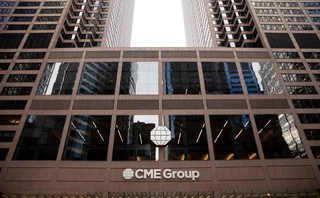
Insurers still grappling with ERM implementation
Op risk remains a weak point at insurance firms
STAMFORD, CT – Insurers around the globe are finding it challenging to fully implement the risk and capital management processes that would enable them to realise the full potential of enterprise risk management (ERM), says Towers Perrin’s 2008 insurance industry ERM survey.
While insurance companies have made progress in integrating ERM into their business processes, more than half (55%) stated substantial work is needed before they can use economic capital to guide risk-based decision-making, and 60% noted considerable strides must be made before they can link economic capital metrics to performance management. More than 40% remain focused on getting the basics right in their economic capital calculations.
The survey, conducted during May and June of 2008 – before the global financial crisis – also found operational risk management capability remains weak. Only 7% of participants stated they have adequate operational risk management capability in place, and 37% said significant work is required, which is in stark contrast to views expressed on insurance, credit and market risks (with 9%, 11% and 16%, respectively, requiring significant work). Operational risk also lags other types of risk in terms of setting risk limits and economic capital calculation methodology.
Operational risk management ranks only seventh among near-term ERM priorities. And when calculating economic capital for operational risk, simplistic factor-based methods are the most commonly used approaches (43%), with only 17% using stress testing and 16% using stochastic methods. Among European insurers, the proportion expected to use an internal model for operational risk (51%) is substantially behind insurance, market and credit risk (86%, 80% and 65%, respectively).
Despite the acknowledged need for improvement, ERM is influencing many important strategic decisions, reports the survey. More than 30% of survey respondents have made changes to their company’s risk strategy or appetite (36%), asset strategies (35%) and product pricing (31%) since the previous survey, conducted in 2006.
“The current crisis in the financial markets, the fragile state of the global economy and a North American hurricane season that has resulted in significant insured losses underscore the importance of having clearly defined risk strategies and tolerances in place,” says Tricia Guinn, managing director of Towers Perrin’s risk and financial services segment. “Taking a holistic approach to risk management, one that connects a company’s risk tolerance to the decisions it makes and the capital it holds, while fostering a culture of prudent risk management and risk-taking at every level of an organisation, has never been more crucial.”
However, insurers appear reluctant to link compensation to risk-taking. Only 30% of respondents indicate they incorporate risk measures of any kind into incentive compensation arrangements, and only 10% use economic capital for this purpose. Some 66% of insurers globally have no future plans to use economic capital in incentive compensation.
European insurers are ahead of their North American counterparts in the implementation of economic capital and its use in decision-making. These capabilities, especially under Solvency II, are expected to lead both to lower capital requirements and a competitive advantage. European insurers are giving greater short-term priority to the use of economic capital within their decision-making processes (56%), compared with their counterparts in North America (40%) and in the Asia-Pacific region (38%), says the survey.
European insurers have also stated that, within the next two years, they expect to use economic capital in most major decision-making processes (80% to 90%), compared with North American firms (60% to 75%) and companies in the Asia-Pacific (50% to 65%).
Over half (52%) of European firms have documented their risk appetite, compared with only 40% of insurers in North America. Survey findings indicate that those same companies in Europe are also more apt to set risk limits for day-to-day management issues such as market risk (88%) than their counterparts in North America (61%).
“European insurers are implementing more sophisticated risk analyses that place them in a stronger position to demonstrate lower capital requirements,” says Steve Taylor-Gooby, managing director of Towers Perrin’s insurance consulting business. “Regulatory drivers are also raising awareness regarding risk mitigation, for example, hedging and reinsurance programmes.”
Only users who have a paid subscription or are part of a corporate subscription are able to print or copy content.
To access these options, along with all other subscription benefits, please contact info@risk.net or view our subscription options here: http://subscriptions.risk.net/subscribe
You are currently unable to print this content. Please contact info@risk.net to find out more.
You are currently unable to copy this content. Please contact info@risk.net to find out more.
Copyright Infopro Digital Limited. All rights reserved.
As outlined in our terms and conditions, https://www.infopro-digital.com/terms-and-conditions/subscriptions/ (point 2.4), printing is limited to a single copy.
If you would like to purchase additional rights please email info@risk.net
Copyright Infopro Digital Limited. All rights reserved.
You may share this content using our article tools. As outlined in our terms and conditions, https://www.infopro-digital.com/terms-and-conditions/subscriptions/ (clause 2.4), an Authorised User may only make one copy of the materials for their own personal use. You must also comply with the restrictions in clause 2.5.
If you would like to purchase additional rights please email info@risk.net
More on Risk management
CME faces battle for clients after Treasuries clearing approval
Some members not ready to commit to 2026 start date; rival FICC enhances services
AI and the next era of Apac compliance
How Apac compliance leaders are preparing for the next era of AI-driven oversight
Responsible AI is about payoffs as much as principles
How one firm cut loan processing times and improved fraud detection without compromising on governance
Op risk data: Low latency, high cost for NSE
Also: Brahmbhatt fraud hits BlackRock, JP Morgan slow to shop dubious deals. Data by ORX News
Transforming the trade lifecycle with pricing and reference data in the cloud
LSEG is developing its cloud-based data service to reflect how financial institutions now use information to feed systems and generate insight
Clearing houses warn Esma margin rules will stifle innovation
Changes in model confidence levels could still trip supervisory threshold even after relaxation in final RTS
Institutional priorities in multi-asset investing
Private markets, broader exposures and the race for integration
12 angry members: why dissent is growing on the FOMC
Hardening views on wisdom of further cuts mean committee’s next meeting is unlikely to be harmonious







